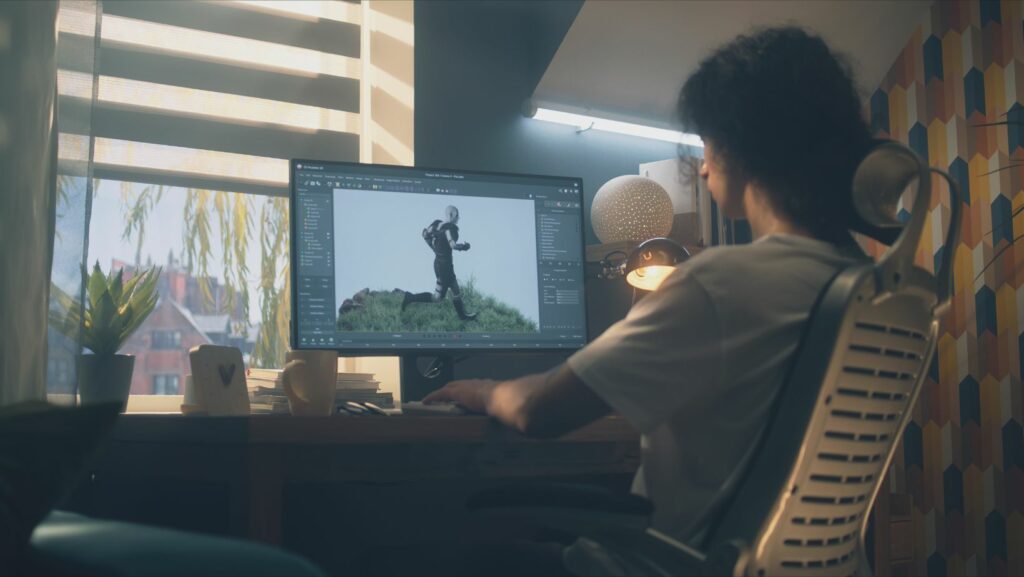 Ever wondered how your favorite animated characters come to life on screen? Understanding how animation works can unravel the magic behind these captivating visuals. It’s a fascinating process that involves bringing static images to motion through a series of carefully crafted steps. From traditional hand-drawn animation to cutting-edge computer-generated imagery, the art of animation has evolved over the years, pushing the boundaries of creativity and storytelling.
Ever wondered how your favorite animated characters come to life on screen? Understanding how animation works can unravel the magic behind these captivating visuals. It’s a fascinating process that involves bringing static images to motion through a series of carefully crafted steps. From traditional hand-drawn animation to cutting-edge computer-generated imagery, the art of animation has evolved over the years, pushing the boundaries of creativity and storytelling.
By delving into the mechanics of animation, one can appreciate the intricate techniques used to create seamless movement and emotion in characters. Whether it’s frame-by-frame animation or 3D modeling, each method offers a unique glimpse into the world of visual storytelling. Exploring the principles of timing, spacing, and exaggeration, animators breathe life into drawings, igniting a sense of wonder and imagination in viewers of all ages.
How Animation Works
Animation is the art of breathing life into static images, captivating audiences with moving visuals. Traditional animation methods involved hand-drawing each frame, which evolved into more efficient digital techniques. Animators harness principles like timing, spacing, exaggeration, and squash and stretch to convey lifelike movement and emotion in characters.
Timing plays a vital role in animation as it determines the pace and rhythm of movements. It is essential to set keyframes at precise intervals to achieve realistic and engaging animations. By adjusting the timing between keyframes, animators can control the speed of motion, creating dramatic or subtle effects as needed. Perfecting the timing ensures that characters’ actions unfold naturally and convincingly on screen.
Principles of Animation
Exploring the principles of animation delves into the core concepts that bring motion to life within static images. Animators rely on fundamental principles to infuse movement with realistic and expressive characteristics, captivating audiences with engaging visuals. By understanding these key principles, animators can create lifelike motion and emotion in characters, elevating the storytelling experience.
- Squash and Stretch:
- Squash and stretch effectuates the simulation of weight and volume in characters and objects through shape transformation. It adds realism to motion by altering the form of elements as they move or come to a halt.
- Timing:
- Timing dictates the pace and rhythm of animations, determining the speed of movement between keyframes. Precise timing control enables animators to craft seamless transitions and effects, enhancing the fluidity and natural flow of motion sequences.
- Exaggeration:
- Exaggeration amplifies movements and expressions beyond realistic limits to emphasize actions and emotions. It serves to heighten the impact of gestures and reactions, making them more engaging and expressive.
By mastering these foundational principles of animation, animators sculpt compelling narratives through dynamic movement and expressive characters, captivating audiences with immersive visual storytelling.
Exploring Different Animation Techniques
The various animation techniques encompass a wide array of methods adopted by animators to bring characters and scenes to life. Understanding these diverse approaches sheds light on the versatility and creativity that can be harnessed in the animation process. Below are some prominent animation techniques employed in the industry:
- 2D Animation: This traditional form of animation involves creating movement in a two-dimensional artistic space. Animators draw each frame by hand to generate a seamless sequence of images that simulate motion.
- 3D Animation: Unlike 2D animation, 3D animation operates in a three-dimensional environment, allowing animators to manipulate objects and characters in a more realistic manner. By sculpting models and defining movements in a 3D space, animators achieve lifelike visual effects.
- Stop Motion Animation: Stop motion animation involves manipulating physical objects, such as clay figures or puppets, frame by frame to create the illusion of movement. This meticulous approach requires precise adjustments between each frame to achieve smooth animation sequences.
- Motion Graphics: Motion graphics focus on animating graphical elements, text, and images to convey information or enhance visual storytelling. This technique is commonly used in advertisements, title sequences, and digital presentations to engage viewers dynamically.
Understanding the intricate process of animation unveils a world where creativity and technology converge to bring characters to life. From traditional hand-drawn methods to cutting-edge computer-generated imagery, animators employ a range of techniques to craft captivating visuals. Keyframes play a pivotal role in defining smooth transitions, while principles like timing and exaggeration shape the pace and emotion of animations.

